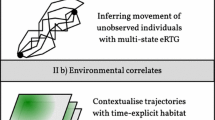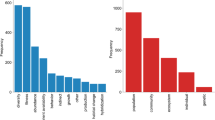Abstract
The spread of invasive species is a long studied subject that garners much interest in the ecological research community. Historically the phenomenon has been approached using a purely deterministic mathematical framework (usually involving differential equations of some form). These methods, while scientifically meaningful, are generally highly simplified and fail to account for uncertainty in the data and process, of which our knowledge could not possibly exist without error. We propose a hierarchical Bayesian model for population spread that accommodates data sources with errors, dependence structures between population dynamics parameters, and takes into account prior scientific understanding via non-linear relationships between model parameters and space-time response variables. We model the process (i.e., the bird population in this case) as a Poisson response with spatially varying diffusion coefficients as well as a logistic population growth term using a common reaction-diffusion equation that realistically mimics the ecological process. We focus the application on the ongoing invasion of the Eurasian Collared-Dove.
Similar content being viewed by others
References
Berger J, De Oliveira V and Sanso B (2002). Objective Bayesian analysis of spatially correlated data. J Am Stat Assoc 96: 1361–1374
Berliner L (1996) In: Hanson K, Silver R (eds) Maximum entropy and bayesian methods. Hierarchical Bayesian time series models. Kluwer Academic Publishers, pp 15–22
Caswell H (2001). Matrix population models. Sinauer Associates, Inc., Sunderland, MA
Clark J, Carpenter S, Barber M, Collins S, Dobson A, Foley J, Lodge D, Pascual M, Pielke R Jr, Pizer W, Pringle C, Reid W, Rose K, Sala O, Schlesinger W, Wall D and Wear D (2001). Ecological forecasts: an emerging imperative. Science 293: 657–660
Fisher R (1937). The wave of advance of advantageous genes. Ann Eugen 7: 355–369
Haberman R (1987). Elementary applied partial differential equations. Prentice Hall, Inc., Englewood Cliffs, NJ, USA
Hengeveld R (1993). What to do about the North American invasion by the Collared Dove?. J Field Ornithol 64: 477–489
Holmes E, Lewis M, Banks J and Veit R (1994). Partial differential equations in ecology: spatial interactions and population dynamics. Ecology 75: 17–29
Hudson R (1965). The spread of the Collared Dove in Britain and Ireland. Br Birds 58: 105–139
Robbins C, Bystrak D, Geissler P (1986) The breeding bird survey: its first fifteen years, 1965-1979. Fish and Wildlife Service Resource Publication 157, USDOI, Washington, DC, USA
Romagosa C and Labisky R (2000). Establishment and dispersal of the Eurasian Collared-Dove in Florida. J Field Ornithol 71: 159–166
Sauer J, Peterjohn B and Link W (1994). Observer differences in the North American breeding bird survey. Auk 111: 50–62
Shigesada N, Kawasaki K (2002) In: Bullock J, Kenward R, Hails R (eds) Dispersal ecology, invasion and the long range expansion of species: effects of long-distance dispersal. Blackwell Publishing, Malden, Massachusetts
Skellam J (1951). Random dispersal in theoretical populations. Biometrika 38: 196–218
Wikle C (2003). Hierarchical Bayesian methods for predicting the spread of ecological processes. Ecology 84: 1382–1394
Wikle C, Hooten M (2005) In: Clark JS, Gelfand (eds) Applications of computational statistics in the environmental sciences: hierarchical Bayes and MCMC methods. Hierarchical Bayesian spatio-temporal models for population spread. Oxford University Press
Author information
Authors and Affiliations
Corresponding author
Rights and permissions
About this article
Cite this article
Hooten, M.B., Wikle, C.K. A hierarchical Bayesian non-linear spatio-temporal model for the spread of invasive species with application to the Eurasian Collared-Dove. Environ Ecol Stat 15, 59–70 (2008). https://doi.org/10.1007/s10651-007-0040-1
Received:
Revised:
Published:
Issue Date:
DOI: https://doi.org/10.1007/s10651-007-0040-1




